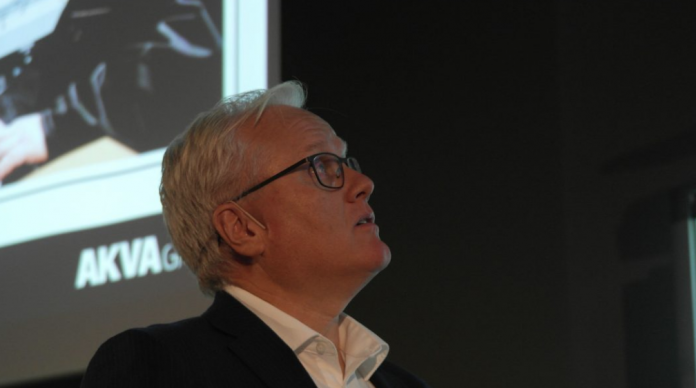But AKVA group director Trond Severinsen doesn’t have much faith in development projects consisting of heavy steel constructions.
“Land-based RAS (Recirculating Aquaculture System) plants are fast accounting for 50 percent of AKVA Group’s revenue. For this reason, post-smolt production facilities in particular are of singular importance to us,” said Trond Severinsen.
Severinsen is Director for Technology and Development at AKVA group. The equipment manufacturer, located at Bryne, Southern Norway, has been listed on Oslo Stock Exchange for twelve years, and last year achieved turnover of EUR 219.6 million.
M&A
“AKVA Group is a result of mergers and acquisitions, and subsequently there has also been a certain amount of organic growth,” Severinsen informed a seminar organised by the company at BI (BI Norwegian Business School) in Bergen.
As a market leader in technology AKVA group has key roles in several of the major projects connected to applications for new development licenses.
“There have been many thrilling development projects. Many projects of “moon landing” dimension. Absolutely fascinating that several of these have even been/are being built,” said Severinsen, with thinly disguised reference to the controversial ocean farms and ocean rigs.
“As it stands, salmon together with yellowtail is the most profitable aquaculture species, so that is presumably the reason for these projects appearing. But we think it will be difficult to make a profit on these massive steel constructions.”
Out in the world
One person who has played a key role in the effecting of the development licenses is Parliamentary Secretary, Roy Angelvik.
“Trond (Severinsen) was slightly sceptical about whether there was a profit to be made on these projects, but only time will tell. I believe it’s important to make an attempt, and that we attempt this as a joint effort.
“It is paramount that growth occurs on nature’s premises. That is of particular concern with the new fisheries minister (Harald Tom Nesvik – editorial remark),” stressed Angelvik.
“In my opinion, that is what we should bear in mind with further discussion. Shall we take on this technology in order to produce the fish for ourselves, or shall we launch it out into the world? I know some of you are already on your way out into the world; something that I personally am a supporter of. Our job as politicians is to lay the groundwork for this”.
Insufficient knowledge
Meantime, Angelvik has a comment to the many, not least on social media, who are absolutely certain that closed containment fish farms is the only navigable way to go.
“We have awarded development licenses to both open and closed constructions. It’s easy to stand on the outside and say that the solution is closed constructions. But I don’t know, given my inadequate background as a chef, that we can say whether we know enough about currents, wastage, fish health, or biology. We don’t know enough about all that here and now. However, it is vital that we get to try these out, and that was essentially the idea with the development licenses”.


